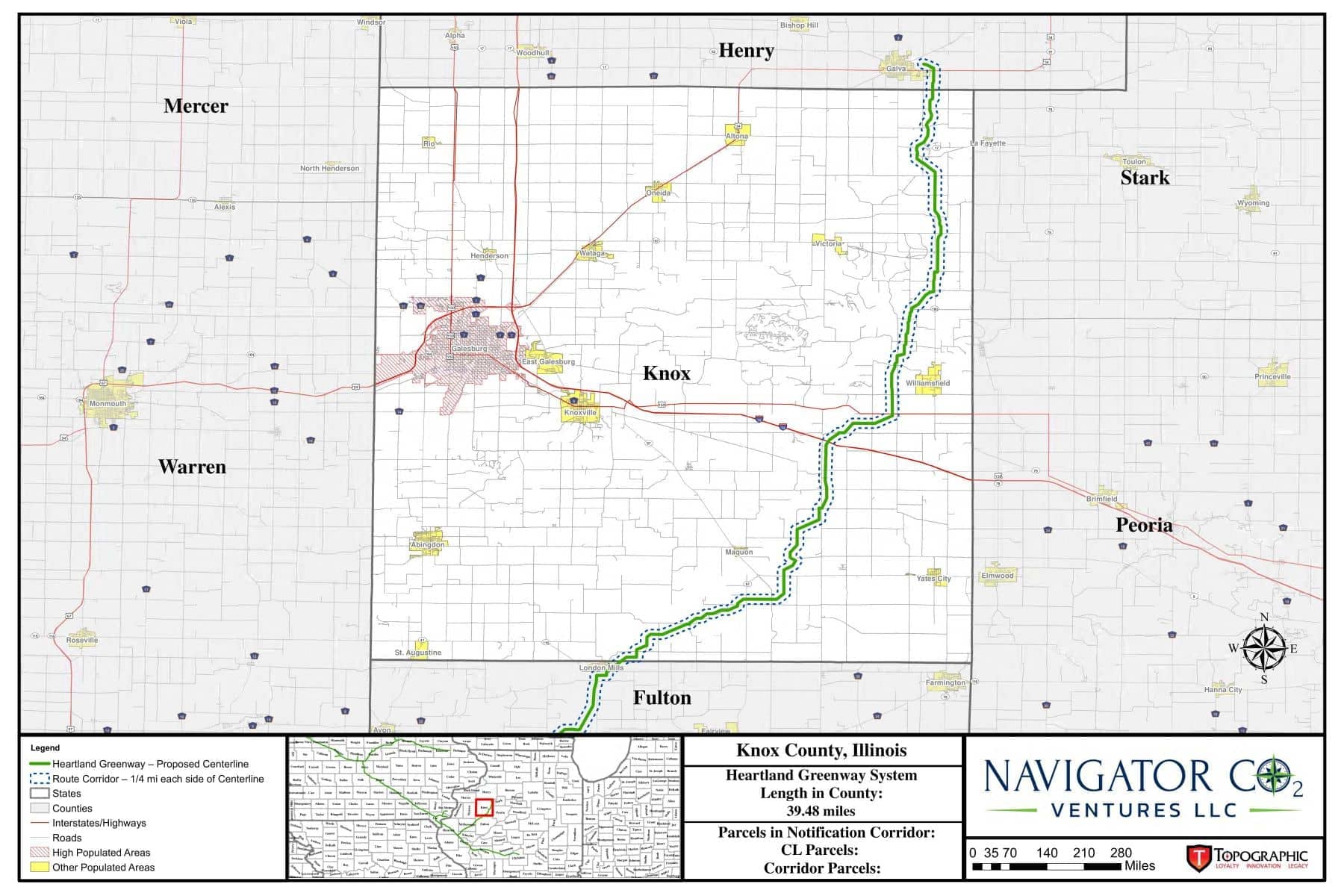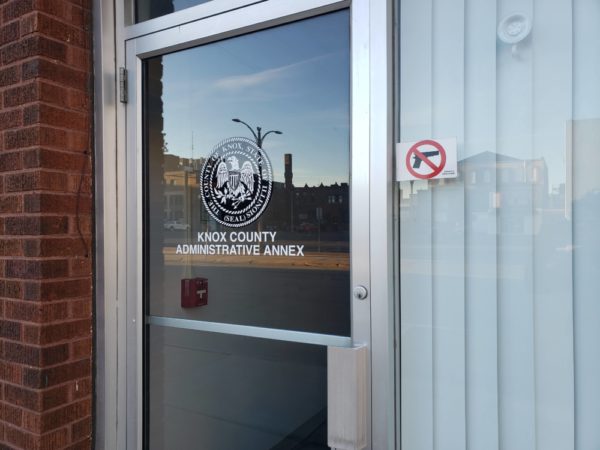A battle is being waged over a pipeline that will stretch from Galva through Knox County, transporting Carbon Dioxide from Big River Resources on the Heartland Greenway System.

Navigator CO2 is in the works of building the pipeline that will originate in Nebraska, South Dakota, and Iowa, be buried at least five feet underground as it travels through the midwest, crosses the Mississippi River, and reaches Christain County in Illinois.
CO2 is created as a result of the fermentation of ethanol at plants across the midwest, including the plants run by Big River in Galva and West Burlington. Navigaotar says that once the pipeline is fully expanded, the Heartland Greenway system will have the ability to capture and store 15 million metric tons of CO2 every year.
There is a push against the pipeline, which will run through the eastern side of Knox County, traveling west of Williamsfield before turning to the southwest and into Fulton County near London Mills.
Knox County Board members heard a presentation last month from Lane and Pam Richardson with the Coalition Against CO2 Pipeline, who presented their concerns about the CO2 pipeline and showed a video of CO2 pipeline ruptures and the after-effects.
One such rupture which was brought up was in Satartia, Mississippi, where a CO2 pipeline ruptured leading to the evacuation of the community and the sickening of dozens of people. “The rupture created a 30-foot-deep crater that covered with a thick coating of ice,” Lane Richardson told the board in September. “One of the things you’ll hear from Navigator is they’re going to use strategically located main valves, with automatic shutoffs, monitored 24/7, 365 days a year. And, that may be true. But the investigators in Satartia noted that just eight minutes after the rupture, the shutoff valves activated both upstream and downstream of the leak.”
The Richardsons also questioned the jobs that were going to be created for the construction of the pipeline. Lane said the company is promising 3,565 jobs at peak construction of the pipeline but had not been independently verified.
This week, the County Board heard the other side of the discussion, from Navigator and Big River Resources. Navigator Vice President Chris Brown gave a presentation this week about the specifics of the pipeline, such as its safety features, and addressed the Satartia incident.
The Pipeline and Hazardous Materials Safety Administration (PHMSA) investigated the incident, finding that the pipeline operator – not Navigator CO2, failed in three areas that led to the pipeline’s rupture and failed in its response. First, the operator did not address the risks of geohazards in its plans or procedures. Second, it underestimated the potentially affected areas that could be impacted by a release of its CO2 dispersion model. And third, it failed to notify local responders and advise them of a potential failure.
Brown told the County Board that since then, PHMSA has issued new safety measures that all CO2 pipelines have to abide by moving forward. In addition, he detailed the industrial specifics of the pipeline’s safety features and design.
The Coalition asked the Knox County Board to put a two-year moratorium in place on CO2 pipelines until more research could be done to address safety concerns and measure the environmental impact.
Landowners, mostly farmers, have spoken out against the pipeline and the potentially devastating impacts on their land – something that Navigator says they would compensate them for any damage sustained during the installation of the pipeline.
No action was taken by the County Board on Wednesday, regarding the pipeline. It is uncertain if a moratorium will be considered.


